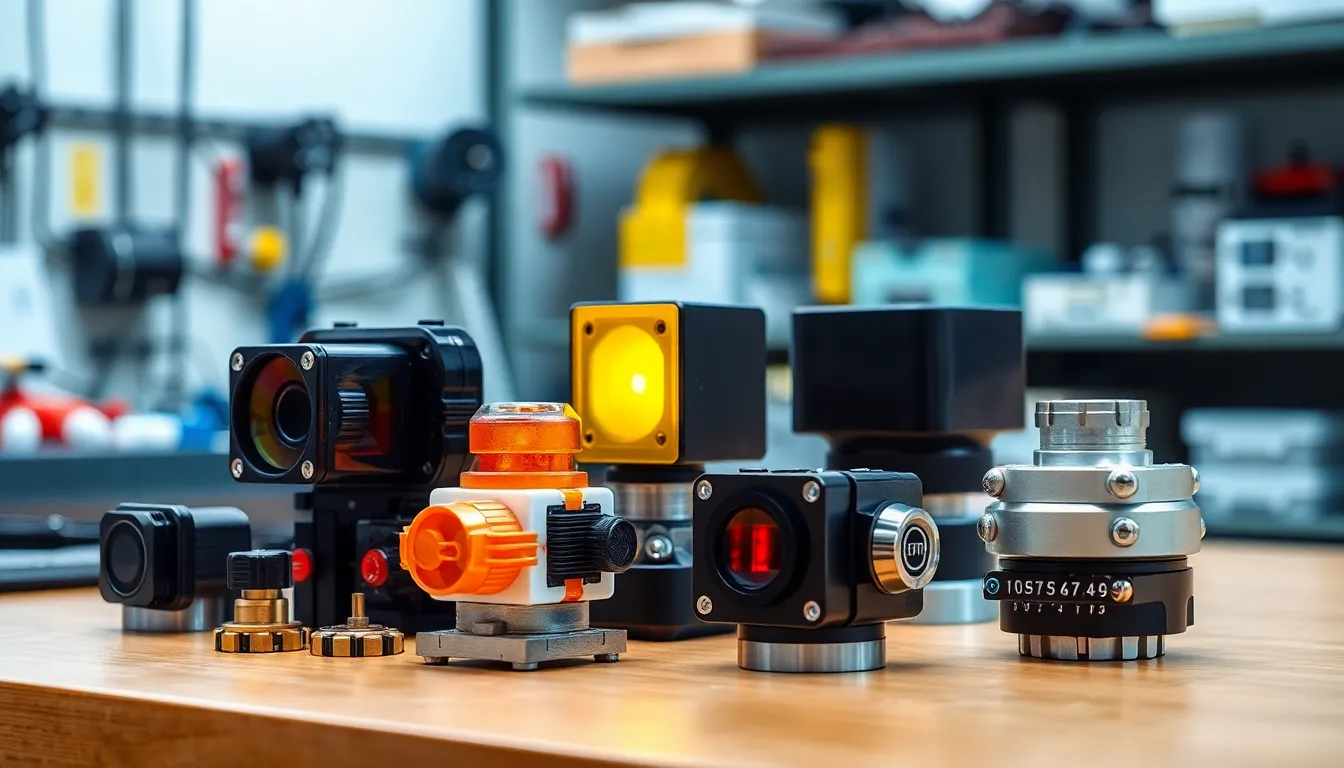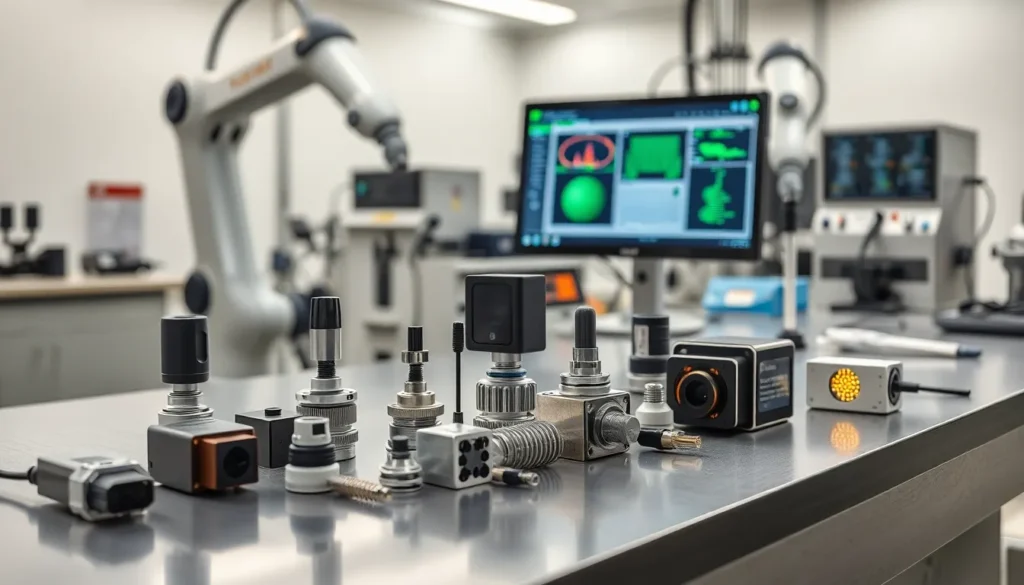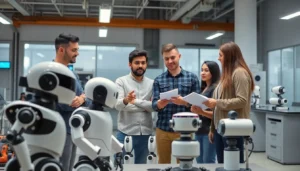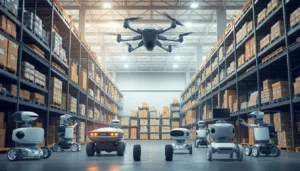In the rapidly evolving world of robotics, sensors play a crucial role in enhancing a robot’s ability to interact with its environment. These sophisticated devices allow robots to perceive and interpret data, making them smarter and more efficient. From detecting obstacles to measuring temperature, robot sensors are the eyes and ears that enable machines to perform complex tasks with precision.
As industries increasingly adopt automation, understanding the various types of sensors and their applications becomes essential. Whether it’s for manufacturing, healthcare, or autonomous vehicles, the right sensors can significantly improve a robot’s performance. This article delves into the fascinating realm of robot sensors, exploring their functions, types, and the impact they have on the future of technology.
Table of Contents
ToggleOverview of Robot Sensors
Robot sensors act as the eyes and ears of automation systems, allowing robots to gather information from their surroundings. Sensors perceive data and relay it to processing units, enabling robots to make informed decisions.
Types of Robot Sensors
- Proximity Sensors: Detect nearby objects without physical contact, using technologies like infrared and ultrasonic. Common in applications requiring obstacle avoidance and automation in production lines.
- Vision Sensors: Capture and interpret visual data through cameras. They play a crucial role in tasks such as object recognition, quality control, and navigation.
- Tactile Sensors: Measure physical interaction through touch. These sensors enhance a robot’s ability to manipulate objects and interact safely with humans.
- Temperature Sensors: Monitor heat levels in various environments. Frequently used in robotics for tasks in food processing and quality assurance.
- Gyroscopes and Accelerometers: Help in determining orientation and acceleration. Essential for maintaining balance in mobile robots and drones.
Application Across Industries
Robot sensors find applications in multiple fields:
- Manufacturing: Improve efficiency and safety on assembly lines by monitoring machine performance and detecting anomalies.
- Healthcare: Assist in surgeries through advanced imaging and real-time feedback, enhancing precision in procedures.
- Autonomous Vehicles: Use a combination of sensors to navigate environments safely and effectively.
Understanding robot sensors and their functionalities enhances the development and integration of robotics into various sectors, driving innovation and efficiency.
Types of Robot Sensors

Robot sensors come in various types, each serving unique functions that enhance a robot’s performance. Understanding these sensors is essential for optimizing robotic applications across different sectors.
Proximity Sensors
Proximity sensors detect the presence of nearby objects without physical contact. They use methods like infrared, ultrasonic, or capacitive sensing to measure distances. Common applications include obstacle avoidance in autonomous vehicles and object detection in industrial robotics. Proximity sensors provide critical data that helps robots navigate and perform tasks safely and efficiently.
Vision Sensors
Vision sensors use cameras and image processing technology to interpret visual information from the environment. They capture images, enabling robots to recognize objects, identify hazards, and understand spatial layouts. Applications span manufacturing for quality control to healthcare for assisting in surgery through real-time imaging. Vision sensors enhance a robot’s ability to make informed decisions based on visual cues.
Temperature Sensors
Temperature sensors monitor and measure thermal conditions to ensure optimal functioning of robotic systems. Common types include thermocouples and infrared sensors. Applications in manufacturing involve monitoring machinery to prevent overheating, while in healthcare, they assist in patient monitoring. Accurate temperature measurements support safety and efficiency in various automated processes.
Lidar Sensors
Lidar sensors utilize laser pulses to measure distances with high precision. They create detailed 3D maps of an environment, providing critical data for navigation and obstacle detection. Lidar sensors are essential in autonomous vehicles, enabling real-time perception of surroundings. Their high accuracy and reliability benefit applications ranging from mapping to environmental monitoring.
Applications of Robot Sensors
Robot sensors play a crucial role in various sectors, enhancing automation and efficiency. Their applications range widely from industrial environments to healthcare and transportation.
Industrial Automation
Industrial automation relies heavily on robot sensors for operational efficiency. Proximity sensors detect objects and prevent collisions during material handling. Vision sensors conduct quality inspections on production lines, ensuring products meet stringent standards. Tactile sensors allow robots to grip items securely, facilitating accurate assembly tasks. Temperature sensors monitor machinery and prevent overheating, optimizing performance and lifespan. Collectively, these sensors improve safety, reduce downtime, and increase productivity across manufacturing processes.
Healthcare Robotics
In healthcare, robot sensors enhance surgical precision and patient care. Vision sensors assist in minimally invasive procedures by providing real-time imaging for surgeons, allowing for careful navigation within the body. Tactile sensors enable robotic arms to perform delicate tasks, such as suturing, by accurately measuring pressure and touch sensitivity. Temperature sensors monitor vital signs and ensure appropriate thermal conditions during operations. Application of these sensors contributes to improved patient outcomes, efficiency in surgical procedures, and reduced recovery times.
Autonomous Vehicles
Autonomous vehicles utilize an array of robot sensors to navigate safely and effectively. Lidar sensors map the environment by sending laser pulses, enabling precise distance measurements. Cameras serve as vision sensors, detecting road signs, lane markings, and other vehicles, enhancing decision-making in complex driving scenarios. Proximity sensors aid in obstacle detection, facilitating safe maneuvering in tight spaces. Together, these sensors form a critical system that enhances road safety, reduces accidents, and improves overall traffic management.
Challenges in Robot Sensor Technology
Robot sensors face significant challenges impacting their effectiveness and reliability in various applications. Addressing these issues is crucial for advancing sensor technology and enhancing robotic performance.
Sensor Accuracy
Sensor accuracy is a critical challenge in robot sensor technology. Inaccurate readings can lead to poor decision-making, resulting in hazards and reduced efficiency. Calibration processes must remain consistent to ensure sensors provide precise measurements. Factors such as manufacturing variances and drift over time can affect sensor performance. Advanced algorithms and machine learning techniques can improve accuracy, but these solutions require substantial computational resources. Overcoming these accuracy challenges is essential for the successful deployment of robots in safety-critical environments.
Environmental Factors
Environmental factors significantly influence robot sensor performance. Conditions such as temperature fluctuations, humidity, and the presence of dust or debris can obstruct sensors, leading to incorrect data collection. For instance, vision sensors may struggle to operate effectively in low-light conditions or bright glare, while temperature sensors might produce unreliable readings in extreme conditions. Additionally, electromagnetic interference from other machinery can degrade sensor signals. Developing robust sensors that can function reliably across diverse environments is paramount for enhancing robotic capabilities in real-world applications.
Future Trends in Robot Sensors
Innovation in robot sensors continues to evolve, shaping the future of robotics across various sectors. Emerging trends focus on enhancing sensor capabilities, improving integration, and increasing versatility.
- Advancements in AI Integration: Machine learning algorithms enhance sensor data processing. AI can analyze data more efficiently and adapt to new situations, improving decision-making in real-time applications.
- Miniaturization of Sensors: Smaller sensor designs help reduce weight and size, allowing for greater flexibility in robotic applications. These compact sensors support deployment in complex environments, offering new operational possibilities.
- Enhanced Sensor Fusion: Combining data from multiple sensors leads to improved perception and accuracy. Sensor fusion techniques enable better environmental awareness, crucial for autonomous vehicles interacting with dynamic surroundings.
- Development of Biometric Sensors: Biometric sensors will offer advanced identification capabilities. They enhance security and personalization in robotics, particularly in healthcare and service applications.
- Greater Use of Environmental Sensors: Environmental sensors that monitor air quality, temperature, and humidity are gaining prominence. They contribute to developing intelligent systems capable of adjusting operations based on environmental data.
- Improved Haptic Feedback: Advanced tactile sensors will provide robots with enhanced touch sensitivity. This improvement allows robots to handle delicate tasks more proficiently, particularly in surgical and industrial settings.
- Expansion of Wireless Technology: Wireless sensors facilitate easier deployment and flexibility in robotic systems. Their elimination of wiring significantly reduces installation complexities and supports mobile applications.
- Focus on Durability and Reliability: Improved materials and engineering practices lead to more durable sensors that can withstand extreme conditions. Enhanced reliability is critical for applications in challenging environments, such as space exploration or disaster recovery.
- Increased Use of Lidar and Vision Technology: Lidar and high-resolution cameras are expanding in robotics, providing precise spatial awareness. Their integration allows for better navigation and obstacle avoidance in autonomous systems.
These trends illustrate how robot sensor technologies continuously advance, significantly impacting industries. As sensor capabilities improve, robots can take on more complex tasks, enhancing overall operational efficiency and safety.
Robot sensors are undeniably transforming the landscape of automation and robotics. Their ability to perceive and interpret environmental data is crucial for enhancing operational efficiency and safety across various industries. As technology continues to evolve, the integration of advanced sensors will further empower robots to perform complex tasks with precision.
The future of robot sensors lies in continuous innovation and adaptation. With trends like machine learning integration and sensor miniaturization, these devices will become even more capable and reliable. As industries embrace these advancements, the potential for robots to improve processes and outcomes will only grow, paving the way for a smarter and more automated world.










